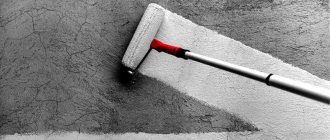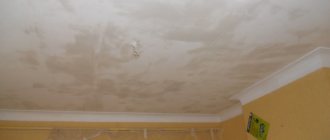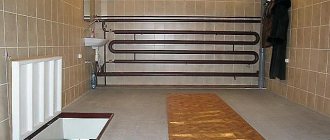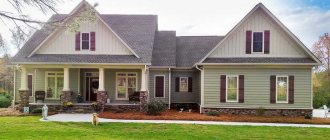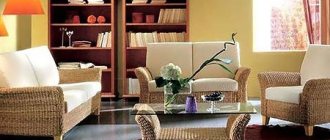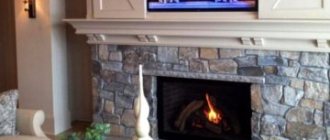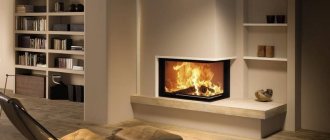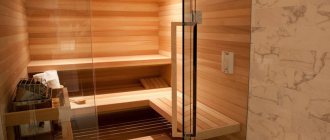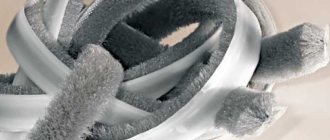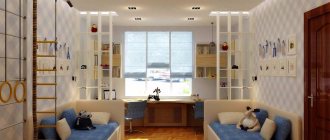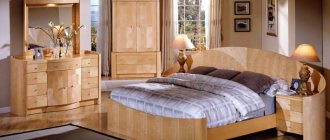Posted by administrator | Dec 8, 2020 | About building materials | |
Share with friends
In urban life, living in apartment buildings, the issue of sound insulation is very relevant. The neighbors are undergoing renovations, children are noisy, televisions are on, the proximity of highways, and other noises penetrating into the apartment force us to resort to soundproofing the room.
The article discusses the materials used for soundproofing walls and ceilings in an apartment, as well as their pros and cons. How to choose the right material to get the desired effect and get rid of extraneous sounds penetrating into your home.
How to choose effective soundproofing materials
Among the variety of materials, you need to make the right choice, which depends on determining the type of noise. They are divided into categories:
- Airborne noise . Sound waves traveling through the air cannot penetrate walls and other obstacles. When they collide with them, they cause vibrations that are transmitted through the air, so sounds penetrate into neighboring rooms. Effective soundproofing materials dampen such vibrations and vibrations, relieving you of the problem.
- Impact noises . With direct impact on the structure (drilling, stomping, hammering in nails), this type of noise occurs. Often in such cases, soundproofing of the ceiling in the apartment is required.
- Structure noise. The most complex type of noise, which is difficult to neutralize, is transmitted throughout the structure. Then you will need to completely soundproof an apartment or other room, including walls, floors and ceilings.
Myths and reality of acoustic plaster
The range of opinions about soundproof plaster ranges from attributing truly wonderful properties to the material, to accusations of quackery, to complete denial of any effect. As often happens, the truth is in the middle.
Plaster cannot provide 100% protection from loud noise. But she is capable of weakening it, turning it from an irritating factor into an unobtrusive background.
A properly prepared and laid composition can subjectively increase the acoustic comfort of a room by 25-30%. At the same time, reduce the noise level by 6-8 dB, which corresponds to an additional layer of brickwork, approximately the thickness of a brick (250 mm).
Soundproofing walls in an apartment - what you need to consider
1. Purpose of the premises
The use of soundproofing materials for living rooms (living room, children's room, bedroom) is not allowed in the kitchen or rooms with high humidity. For them you will have to buy material with increased moisture resistance, resistant to temperature changes.
2. Size and area of the room
In rooms with a large area, it is possible to install sound-absorbing multilayer structures using the frame method - these are mineral wool, Isotex boards. For a smaller children's room, you should choose ultra-thin membranes or drywall that do not reduce the area.
3. Quality and texture
The price of soundproofing materials depends on the quality, which is important. The texture provides for the interior decoration of residential premises, therefore the composition should not contain toxic substances, formaldehyde, lead, etc.
4. High-quality installation and integrity of the coating
Effective sound insulation of walls in an apartment requires compliance with the integrity of the coating, a very important requirement. All connections and joints are carefully sealed with sealant to avoid a decrease in sound insulation. You should also carry out high-quality installation of sound insulation to achieve the desired result.
Warm plaster for exterior use
For warm plasters, solutions are used that have a volumetric weight in the air-dry state of 600 to 1200 kg/m3. Binders: Portland cement, hydraulic lime, air lime, lime + Portland cement. Fillers: chalk, boiler slag, tuff and pumice fines or organic matter (sawdust, charcoal chips, sifted sphagnum fines). Fillers in warm mortars are dosed in the same way as building sand in cold mortars; the ratio between binder and filler is from 1:2 to 1:3 (by volume).
The grain size of inorganic aggregates is from 0.25 to 2 mm; fillers should not contain dust or mealy particles. For internal tentations, grain size is up to 3 mm.
When applying warm plasters, you must follow the following rules: warm plasters are applied in a layer of 3 to 7 cm according to calculation; the wall surface should not be wet; a surface that is too dry should be moistened by spraying; Before applying the mortar, the walls are sprayed with a liquid mortar of the same composition, but with a finer aggregate.
Under plasters containing sawdust or sphagnum, spraying is done with a solution in which the aggregate is replaced with sand.
Classification: sound-absorbing, sound-insulating, ultra-thin (soft insulation, hard insulation)
The purpose and operational characteristics of soundproofing materials are divided into types:
Sound-absorbing
When used, the effect is achieved by converting sound energy into thermal energy. This way the intensity of the reflected waves is dampened. This result is achieved by using materials such as polyurethane foam panels, ZvukoIzol, liquid sound insulation, fiberglass boards. They are mounted on walls and lined with gypsum plasterboard; the thickness of such insulation can be up to 3.5 cm and is not considered thin. An exception is a rolled cork, 0.8 mm thick.
Soundproofing
This type of sound insulation serves as a barrier to sound waves, preventing sound from entering the room. Among the best soundproofing materials are: Shumanet, Zvukoizol, ZIPS panels, SoundGuard, Fonstar panels. Decorative panels, layered structure and filler are also in demand, effectively blocking sound and allowing you to immediately create the desired interior in the room.
Ultrathin
Ultrathin materials for sound insulation are gaining popularity - these are membranes and films that neutralize sound waves. Among them, the best characteristics are possessed by Texaund mineral membranes and Green Glue liquid noise insulation, which has a viscous structure and, after hardening, does not allow noise into the room. Their advantages are ease of use and do not take up useful space.
Sound-absorbing materials are classified according to the degree of rigidity: hard, soft, semi-rigid.
Solid insulation. Such materials are made on the basis of mineral wool, including porous fillers: expanded vermiculite, perlite. The disadvantage is their weight, which is up to 400 kg per cubic meter.
Soft insulation . Products of this type are made using fiberglass, felt, and mineral wool as a base. Lightweight, up to 70kg per cubic meter. High sound absorption coefficient.
Semi-rigid insulation. This includes polyurethane foam having a porous structure and fiberglass plates. Maximum weight up to 130 kg per cubic meter. The sound absorption coefficient is quite high and amounts to 0.75.
Acoustic plasters
Acoustic plasters (stone, concrete, wood), pre-coated with Portland cement-based primer. Common composition for soil: I: 3.5 or 1:4 with the addition of 10% lime. A layer of acoustic plaster is applied to unpainted soil using the usual techniques.
The acoustic properties of plasters increase if the plaster layer is applied not to a dense wall, but to a surface made of coarse-grained materials, and also if an air gap is placed between the wall and the plaster, filled with slag wool or asbestos fiber.
Painting or whitewashing reduces the acoustic properties of plasters, especially at high frequencies of sound vibrations. The acoustics laboratory of the Moscow Architectural Institute has developed a number of recipes for acoustic plasters.
Acoustic (sound-absorbing) plaster can be applied to any surface
Plaster ADC
Crushed building pumice is sifted through a sieve with holes of 3-5 mm. The residue on a sieve with 3 mm holes is used as filler. The binder is cement. A mixture of pumice and cement is mixed dry and diluted with water. Dosage of the plaster composition per 1 m2 of surface with a plaster thickness of 20 mm: Pumice………………………………………………………………………………. 28.8 l Cement………………………………………. …………………7.2 l Water……………………………………………………………… 7.2 l Volumetric weight of pumice………………… ………………… 400 kg/m3. ………………plasters…………………………………… 620
Method of application. A layer of ADC plaster 25 mm thick is applied over a still damp layer of pre-applied cement plaster (about 10 mm thick). Under normal conditions, the plaster takes about 25 days to dry. It can be applied to concrete, stone and wooden (on the Rabitz grid) surfaces.
AGP plaster
Crushed pumice is sifted through a sieve with 2-3 mm holes. The residue on a sieve with 2 mm holes is used as filler. The binder is sifted gypsum. Pumice is poured into the gypsum milk and mixed thoroughly. Dosage of the plaster composition per 1 m2 of surface with a plaster thickness of 25 mm: Pumice………………………………………….. 19.2 l Gypsum…………………………………………………… ….. 4.8 Water……………………………………………. 6.0 Volumetric weight of pumice……………………… 400 kg/m3………………..plaster. 700 - 800 kg/m3
Method of application. The prepared plaster is applied in its raw form as an overlay (without grouting) onto the surface to be plastered (concrete, stone or wood).
ACSH
Crushed boiler slag is sifted through a sieve with holes of 3-5 mm; the residue on a sieve with 3 mm holes is used as filler. The binder is cement. The mixture of slag and sifted cement is mixed dry and water is added.
Slag……………………………………… 19.2 l Cement……………………………………………………… 4.8. Water…………………………………………………………… 3.2 " Volumetric weight of slag……………….. 840 kg/m3
plaster .. 1100-1200 kg/m3
The application method is similar to that for the ADC.
Acoustic plaster of subway tubes
The composition of the plaster is cement: asbestos fiber: sand in a ratio of 1:2:1 to 1:6:1. This mixture is applied by gunning in a layer of 5-10 mm and a preparation layer of cement and sand (1:2) 5-5 mm thick. 6 mm.
Acoustolit ASP
Crushed pumice is sifted through a sieve with holes of 2 and 1 mm. The residue on a 1 mm sieve is used as filler. The pumice is then dry mixed with caustic magnesite sifted through a 0.25 mm sieve. After this, hydrochloric acid is poured in and the whole mass is thoroughly mixed until evenly moistened. Dosage of the plaster composition per 1 m2 of surface with a plaster thickness of 25 mm: Pumice……………………………………………………19.2 l Magnesite…………………………………4, 8 Hydrochloric acid……………………… 6.4 Volumetric weight of pumice………………….. 400 kg/m3 .. . magnesite……………………………..1000….acoustolite. . . ………….. 900 Hydrochloric acid……………………… 12° Be The application method is similar to that for AGP.
Soundproofing materials - ranking of the best
When choosing sound insulation for the walls in an apartment, you need to consider the pros and cons of the materials. We have provided an overview of the best materials for soundproofing rooms. The rating is based on reviews from consumers and repair professionals.
Minvata
Mineral wool - available in rolls and slabs, a very popular material. Effective sound insulation (retains 90% of noise), suitable for installation on any surface. The main thing when covering walls with mineral wool is to join tightly and seal all the cracks.
Advantages of mineral wool as sound insulation:
- Affordable price;
- Light weight (does not weigh down the structure);
- Fire resistance;
- Simplicity and ease of installation;
- Sound insulation efficiency;
- Serves as additional thermal insulation.
Main disadvantages:
- Loses all its properties from moisture;
- Small fibers are harmful; they can enter the lungs during installation;
- When exposed to high temperatures, it releases formaldehyde compounds.
Cork covering
Has high performance characteristics, best protection against impact noise. It began to be used for sound insulation relatively recently. Soundproofing walls in an apartment using cork is most effective.
Advantages of cork insulation:
- Environmentally safe for humans;
- Moisture resistant;
- Not susceptible to rotting, fungus and mold;
- Durable - 40 years or more.
Flaws:
- Flammable;
- Burns out and collapses when exposed to direct sunlight;
- Difficult to install;
- High price.
ThermoSoundIsol
This universal material is used to soundproof walls, floors, and ceilings. Roll covering has high noise-absorbing and shock-absorbing properties. Does not contain toxic or volatile additives.
Advantages:
- Absorbs external noise of any type;
- ThermoZvukoIzol additionally serves as a good insulation material;
- Versatility - can be used on any surface;
- Elastic, environmentally friendly - safe for humans, suitable for all types of apartment living spaces
Flaws:
- Quite a lot of weight;
- Difficult to install;
- The high price of ThermoZvukoIzola is due to the corresponding operational characteristics.
SoundGuard EcoZvukoIzol
Available in the form of panels, which is very practical. Among modern materials for soundproofing walls in an apartment, it stands out for its high efficiency in combating external noise. These products are available in several types:
- SoundGuard EcoZvukoIzol;
- SoundGuard Standard;
- SoundGuard Slim;
- SoundGuard Premium.
Advantages:
This soundproofing material has many advantages, which should be listed in full:
- Isolate the room from airborne and impact noise;
- The versatility of the panels allows you to insulate any surfaces in the apartment;
- Completely safe for humans, environmentally friendly material;
- SoundIsol panels are a thin type of insulation that do not take up useful space;
- Simple design and installation (if necessary, the slabs are cut with a simple hacksaw);
- It is used as a screed when installing heated floors.
Flaws:
- Only by covering all surfaces of the room can complete sound insulation be achieved;
- Hydroscopicity. Exposure to moisture is unacceptable;
- High price.
Isotex
Today, among materials for interior decoration, Isotex panels are recognized as the most environmentally friendly material. They are widely used for finishing work indoors, performing two functions - decorative coating and soundproofing. Performance characteristics and quality are very high.
Advantages:
- High noise reduction coefficient;
- Serves as additional thermal insulation and decorative coating to create an interior;
- If damaged, partial replacement of panels is possible;
- Installation of isotex panels is carried out on any surface (brick, wood), without preliminary preparation;
- Create a comfortable indoor microclimate.
Flaws:
- High price, like any natural materials;
- Hydroscopic, softens when exposed to moisture.
Polyurethane foam
Polyurethane foam is a polymer of a number of thermoactive plastics. It is applied by spraying and hardens on the surface, turning into a dense coating. The noise-insulating layer is obtained by applying a closed-cell type of this material, which serves as an excellent sound insulator.
Advantages:
- High sound and noise absorption;
- Can be applied to any surface;
- Lightweight (does not weigh down the structure);
- Spraying polyurethane allows you to get a complete, seamless coating.
Flaws:
- Loses its properties when exposed to direct ultraviolet radiation;
- Flammability;
- Low vapor permeability.
Isoplaat
High-quality wood fiber boards have a porous structure, which gives them good sound insulation properties. The sound insulation of the walls in the apartment is ideal. Absorbs noise of various types and frequencies. Has high performance characteristics.
Advantages:
- The small thickness of the slabs does not take up space during interior decoration;
- In addition to sound absorption, it is used as insulation;
- The material is vapor permeable and creates a comfortable microclimate in the rooms;
- Natural, environmentally friendly material;
- Isoplat plates are easy to install;
- Service life 50 years or more.
Flaws:
- Under the influence of dampness, the material begins to deteriorate;
- High price.
Kraft
Kraft boards are made from wood fiber and are used for finishing rooms and soundproofing walls in apartments. Fiberboard panels are covered with paper on both sides. Natural materials ensure environmental friendliness and safety. Refers to a type of thin insulation. Such slabs can be mounted directly on walls using glue. After installing the coating, finishing is required under wallpaper or other finishing materials.
Advantages:
- Compactness of panels (width and height);
- The thickness is 1.2 cm (does not take up space);
- Lightness of the material - one slab measuring 2.7 m by 58 cm weighs only 5.5 kg;
- Easy to assemble and install.
Disadvantages: – Like all wood-based materials, they are susceptible to exposure to moisture and dampness.
Maxforte SoundPro
To soundproof walls in apartments, the composite material Maxforte SoundPRO was created. Available in rolls, practical and compact with a thickness of 1.2 cm. Can be mounted on walls, ceilings, floors when installing joists or floating screeds.
Advantages:
- The coating does not lose its shape throughout its entire service life.
- In addition to noise reduction, Ecoacoustic has high thermal insulation qualities.
- The efficiency of sound absorption is significantly increased when installed in a metal frame.
- The coatings can be easily cut with a simple knife or household scissors.
- Installation of sound insulation does not require special conditions. The frame and slabs are installed in a short time.
The disadvantages of the material include the following:
- the effectiveness of sound insulation of slabs is achieved only in combination with a frame;
- increased complexity of installing soundproofing structures;
- high cost of slabs.
Installation of sound insulation MakForte SoundPro – Video
ZIPS panels sound insulation
ZIPS multilayer sandwich panels are widely used on internal and external surfaces to protect against the penetration of external noise. High soundproofing characteristics are ensured by the design of the slabs - these are soft and dense layers with an outer facing coating. Fastening with vibration units dampens the transmission of sound vibrations through the structure. It is possible to install using frame technology or without it.
Advantages:
- High quality insulation from impact and airborne noise;
- Possibility of installation on surfaces without preliminary finishing and leveling;
- Affordable prices.
Flaws:
- The thickness of the panels conceals space (impractical for use in small rooms);
- The panels are heavy, which is impractical for installation.
ORDER ZIPS PANELS WITH DELIVERY IN RUSSIA AND CRIMEA
Soundproofing panels Fonstar (PhoneStar)
Multilayer panels of the Fonstar system are quite in demand on the domestic market for soundproofing materials. The design of the sheets consists of several layers with a mineral granular filler located between them. This design and composition retains all sound waves and dampens vibrations.
Advantages:
- Quick and easy assembly when installing a soundproofing coating;
- The universal PhoneStar system is suitable for insulating walls, ceilings and partitions;
- Affordable price.
Flaws:
- Exposure to moisture is unacceptable;
- Large weight and area of sheets;
- A material with a fairly high level of flammability, which limits the scope of application of the material.
Soundproofing TechnoNIKOL
Very practical thin modern material in rolls. Thin insulation. It absorbs sound well when installing floors and partitions. Such protection is in demand for interior decoration on walls; thin sheets do not reduce space. On floors, TechnoNIKOL protection does not allow the sound of footsteps and vibrations of the building structure to pass through.
Advantages:
- Easy installation;
- Protects against air and shock sound waves;
- Neutralizes electromagnetic radiation (even from devices from neighboring apartments);
- Durability, does not lose its properties for 50 years or more;
- Affordable price.
Disadvantages: none identified.
Schumanet-BM
Shumanet-BM mineral slabs are made from basalt fiber. Refers to modern premium materials, despite the low price. User reviews show that the material fully lives up to its name. Manufactured products undergo strict quality control, even at the production stage. One of the few soundproofing materials that can be confidently used in rooms with high humidity.
Advantages:
- High noise protection qualities;
- Water resistance;
- Easy installation on any surface;
- High fire resistance;
- Affordable price.
Flaws:
• There are no obvious disadvantages , except for the unpleasant odor from the newly manufactured material, which quickly disappears.
ORDER SCHUMANET MINERAL PLATES WITH DELIVERY IN RUSSIA AND CRIMEA
Tecsound
Eco-friendly, practical noise-absorbing material of a new generation. Available in rolls and used mainly for walls and ceilings. Soundproofing walls in an apartment using Texound soundproofing is an ideal option, because it reduces the area of the room, which allows you to isolate even small rooms.
Advantages:
- Effective noise protection;
- Practicality (can be placed on different surfaces);
- Easy installation;
- High fire resistance (the material is non-flammable);
- Not afraid of temperature changes;
- Durability. Does not lose its properties for 40 or more years;
- Tecsound's environmental friendliness is confirmed by certificates and meets high European standards.
Soundproofing walls in an apartment: common mistakes
In conclusion, we should especially note the frequent mistakes made by homeowners who want to protect themselves from external sounds. When installing soundproofing in an apartment using modern materials, you should first take into account the types of noise.
Manufacturers indicate the noise absorption characteristics of this material. Manufacturers cannot determine the type of sound waves or their nature.
To obtain the desired result when installing soundproofing in an apartment, it is important to choose the right material and install it. It is recommended to obtain specialist advice before starting work.
Share with friends
